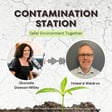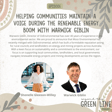
Defining the Problem: John Hunt on Sustainable Remediation
John Hunt is a renowned expert in contaminated land remediation and Senior Technical Adviser at Ventia. John has qualifications in geology and is Certified Site Contamination Specialist with more than 30 years’ experience in contaminated site assessment and remediation.
He started in the industry in 1992 with Groundwater Technology Australia as a contamination consultant. After 5 years with ADI Limited remediating former Defence munitions manufacturing sites, he joined Thiess Services (the precursor of Ventia’s remediation business) in 2000.
John has worked on many of Australia’s iconic remediation projects including the 2000 Olympics site, the Mortlake gasworks, the Rhodes Peninsula dioxin sites and Orica’s Botany Car Park remediation. Most recently he has become involved in PFAS remediation, a problem he had originally planned to leave to the next generation of practitioners to solve. He is a past president of ALGA and a long term member of the Sustainable Remediation Forum of Australia and New Zealand (SuRF ANZ), a specialist interest group of ALGA.
In this episode, John delves into the importance of problem definition in contaminated land management. He explains how diverse disciplines in geology, science, and engineering come together to tackle environmental challenges and emphasizes that miscommunication between these fields can lead to incorrect remediation approaches.
John discusses the evolution of sustainability in remediation, explaining how sustainable solutions are highly context-specific and depend on the environmental, social, and economic conditions of a site. He highlights the role of guidelines like ISO 18504 in providing a framework for sustainable remediation and encourages councils to integrate sustainability considerations early in project planning.
You will also gain insights from John's experiences on iconic Australian projects like the Sydney Olympics site and Rhodes Peninsula, where consultation with communities shaped effective and practical remediation strategies. He wraps up with advice for councils on staying up to date with emerging challenges, such as PFAS contamination and climate change impacts, and stresses the importance of forward-looking cost analysis in remediation planning.
-----
Are you a local NSW council member looking for more resources like this?
You are invited to join the Local Government NSW Contaminated Land Network!
Local Government NSW (LGNSW) hosts a free, online network for council staff on the topic of contaminated land. The network includes an online forum for collaboration, information sharing and announcements about contaminated land regulation, guidance and training opportunities. Monthly meetings are held on themes that were set by the network participants, with presentations from regulators, technical experts, and case studies by councils.
Since the contaminated land network commenced in December 2023, more than 50% of NSW councils have joined, with over 200 participants. Feedback shows that councils are benefitting greatly from the network meetings and discussion on the platform, and we are pleased to invite you to join us.
To join the network, please use this link: https://lgsa.wufoo.com/forms/w1rf0os910rxyl6/
The Contaminated Land Network forms part of a project called “Councils Managing Contaminated Land Together” funded by the NSW Environment Protection Authority (NSW EPA) to support capacity building and informed decision-making by those involved in contaminated land management in councils. The project also comprises a webpage with up-to-date information and links to resources, which can be accessed here.
We hope to see you on the network soon!



















